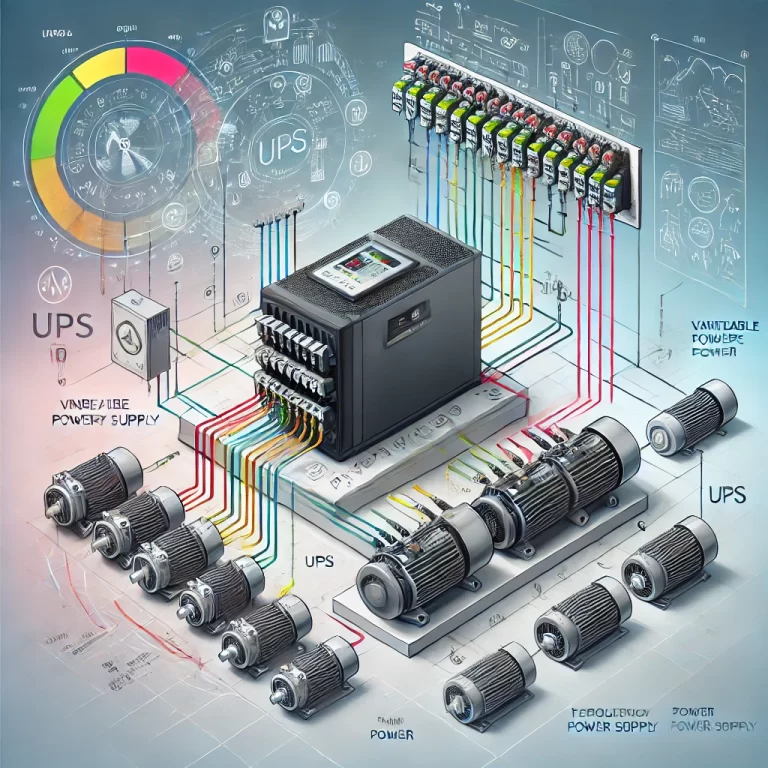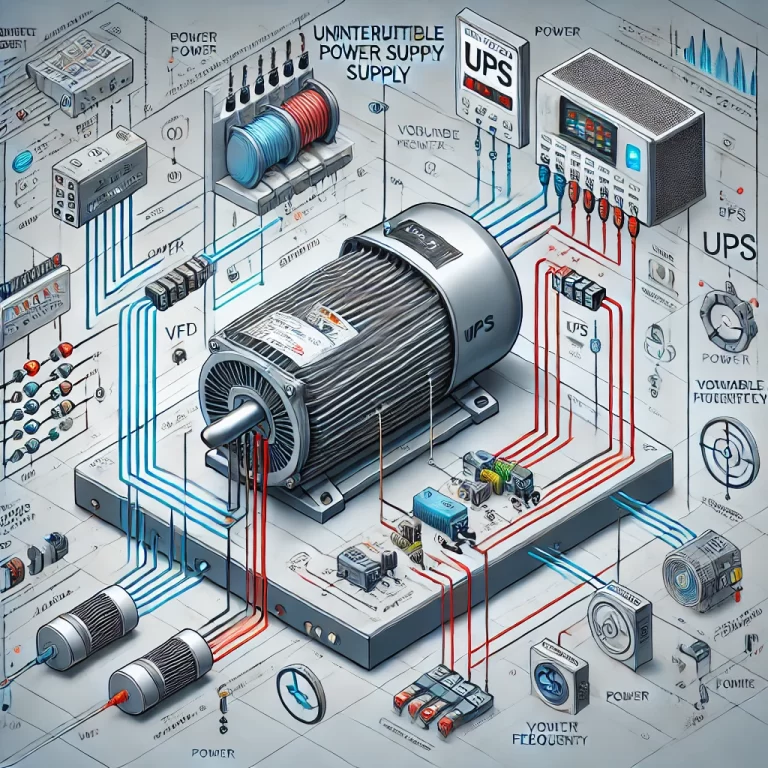In industrial applications, ensuring the stability and reliability of power supply to critical equipment is paramount. A Variable Frequency Drive (VFD) is one such crucial piece of equipment that controls the speed of electric motors by varying the frequency of the power supplied to them. The addition of an Uninterruptible Power Supply (UPS) in a VFD control circuit can significantly enhance the system’s resilience against power interruptions, voltage fluctuations, and other electrical anomalies. But is it always necessary? Let’s explore the key factors and benefits to determine if installing a UPS in the VFD control loop is advisable.
1. Protection Against Power Outages and Voltage Fluctuations
One of the primary reasons to integrate a UPS with a VFD system is to protect the equipment from power outages or voltage fluctuations. VFDs are sensitive to variations in power quality, and sudden voltage dips, spikes, or power outages can disrupt the motor control process, causing operational downtime and potential damage to the system.
In the event of a power failure, the UPS provides a temporary power source, enabling the VFD to either continue operating for a short period or, at the very least, shut down gracefully, preventing damage. This is particularly important in processes where the immediate stop or restart of the motor could lead to mechanical stress, wear, or system faults.

2. Safeguarding Sensitive Equipment
Many VFD-controlled applications are linked to sensitive machinery or critical industrial processes. In scenarios such as precise manufacturing, production lines, or HVAC systems, any interruption in power could lead to defects in the end product, costly downtime, or even system failures.
A UPS helps to mitigate the impact of sudden power disruptions, ensuring that sensitive equipment receives a consistent, uninterrupted power supply. By acting as a buffer, the UPS protects the VFD and other interconnected systems from power irregularities such as surges, brownouts, or transients, which could otherwise lead to component failure, data loss, or incorrect motor operation.
3. Enhancing System Stability and Reliability
In environments where system stability is crucial—such as critical infrastructure, automation systems, or industrial plants—a UPS plays a vital role in maintaining operations without interruption. The continuity of power from the UPS helps prevent unexpected shutdowns that could lead to process delays, loss of production, or even safety hazards. For example, in facilities that operate 24/7 or in mission-critical applications (such as wastewater treatment or food processing), an unplanned power loss can have severe consequences.
The presence of a UPS enhances the overall reliability of the system, providing a safeguard that ensures the VFD and its connected systems continue functioning until the primary power supply is restored or the system can be safely powered down.
4. Enabling Extended Runtime During Power Loss
While the main purpose of a UPS is to provide backup power during outages, it also allows for a controlled shutdown of equipment. If the VFD controls essential processes and requires more time to complete tasks or safely stop the motor, a UPS can supply enough power to carry out these actions.
For instance, in some applications, especially with large industrial motors, a sudden loss of power can cause significant mechanical damage. A UPS can provide enough time for the VFD to safely decelerate the motor or adjust operational parameters to prevent harm. In scenarios where processes cannot afford to stop immediately, a UPS gives operators more time to respond before the power is completely lost.
5. Cost Considerations and Feasibility
Despite the clear benefits of adding a UPS to a VFD system, the decision to install one should take into account the specific needs of the application. UPS systems, depending on their size and capabilities, can represent a significant upfront investment. Additionally, maintenance costs and the potential need for battery replacements over time should also be considered.
For small-scale operations or applications where power disruptions are rare and not critical, the expense of a UPS may not be justified. However, for larger installations or in industries where downtime can lead to significant financial losses, a UPS becomes an invaluable component of the system’s infrastructure.

6. Best Practices and Considerations for UPS Integration
Capacity Matching: When integrating a UPS with a VFD system, it is essential to match the capacity of the UPS with the power requirements of the VFD and the motor load. An undersized UPS will not provide adequate backup, while an oversized UPS might result in unnecessary energy waste and increased costs.
UPS Type: The type of UPS should also be considered. A true online UPS offers continuous power without interruption, which is ideal for sensitive VFDs. Other types, such as offline or line-interactive UPS, may introduce slight delays or compromises in power quality, which could affect the performance of the VFD.
Maintenance and Monitoring: Regular maintenance and monitoring of the UPS system are crucial to ensure its reliable operation during a power outage. The health of batteries, load capacity, and overall UPS performance should be regularly checked, especially in critical applications.
Conclusion
In conclusion, adding an Uninterruptible Power Supply (UPS) to a Variable Frequency Drive (VFD) control circuit is often a wise decision, particularly in environments where power reliability is critical, and downtime can result in significant costs or damage. While not always necessary for every application, the benefits of a UPS—ranging from protecting sensitive equipment and ensuring system stability to providing an extended runtime during outages—make it an essential addition for many industrial and commercial operations. Careful consideration of the system’s power needs, the type of UPS, and the specific application will help determine the most effective integration.
By investing in a UPS, operators can improve the reliability and longevity of their VFD systems, safeguarding both equipment and operations in the face of electrical disturbances.
